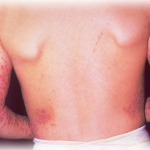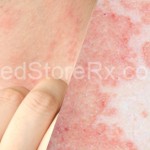 As teenagers, hormonal changes cause our skin to react in a way we can hardly explain. But for some of us, acne and break-outs follow right through adulthood. Here are 10 common skin problems adult’s encounter and the ways to tackle them.
As teenagers, hormonal changes cause our skin to react in a way we can hardly explain. But for some of us, acne and break-outs follow right through adulthood. Here are 10 common skin problems adult’s encounter and the ways to tackle them.
Shingles
The virus that causes chickenpox is responsible for causing Shingles. It can easily spread amongst people who have not had chickenpox as kids. The symptoms involved are burning and tingling sensations. A rash created out of raised dots tends to transform into painful blisters.
It commonly occurs on the butt and torso sections of the body. But, there is nothing stopping them to spread anywhere else. The symptoms can take weeks or months to disappear. Even when the visible rash vanishes, the pain, burning and itching continues.
Antiviral drugs and steroids can help shun the long-term discomfort that arises after shingles. But basic treatment methods include keeping the affected area clean with soap and water and applying anti-itching lotions such as calamine.
Moles
Almost every adult bears a few moles. Moles do not look alike. Theyappear in various sizes, colors and shapes. Some of them are common ones and some increase the risk of getting melanoma, which is a type of skin cancer.
Be careful of the new spot on your skin that is asymmetrical, has an irregular and scalloped border, has shades varied one from another, is greater than the 6mm diameter of a pencil eraser and constantly evolves. These are atypical moles that can lead you to melanoma, more so if you have a family history of the same. Protect yourself from the sun and see your dermatologist as soon as you notice one.
Hives
The result of an allergic reaction on your skin is called hives. Whenever you experience appearance of welts that cause itching, they are hives. Anything that is odd in the food and medication you consume is responsible for causing it.
Hives are common and thus usually go away on their own. In serious cases, you could help yourself with a shot or a medicine. In extremely rare cases hives might cause a swelling in your airways, dangerous enough to make it difficult for you to breathe. This definitely is an emergency.
Eczema
Eczema is a wider term used for several types of skin swelling. It is also known as dermatitis. This medical issue is not a dangerous one. The skin in this case becomes red, swollen and itchy. Factors causing eczema could be anything from your genetic make-up to being allergic to sources that cause irritating skin. It is non-contagious and can be treated by avoiding stress, irritants and the items you are allergic to. Since it is a chronic disease, you cannot eradicate it completely.
Cold Sores
Also referred to as fever blisters, cold sores are extremely contagious. A virus named Herpes Simplex is responsible for causing it. These are painful and small fluid-filled blisters. They usually last for an approximate of ten days and could easily last longer.
Try avoiding cold sores by coming into contact with the bodily fluids by ways of kissing an infected person, sharing utensils or any such item that a person with cold sore might have used. Fever, exposure towards the sun, stress and cold weather can induce cold sores, so try taking extra care during such phases.
One a person is infected cold sores stick to them for the rest of their lives. But the temporary treatment includes skin creams, ointments and some pills.


 Cart : 0 items - $0.00
Cart : 0 items - $0.00










